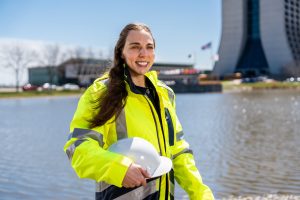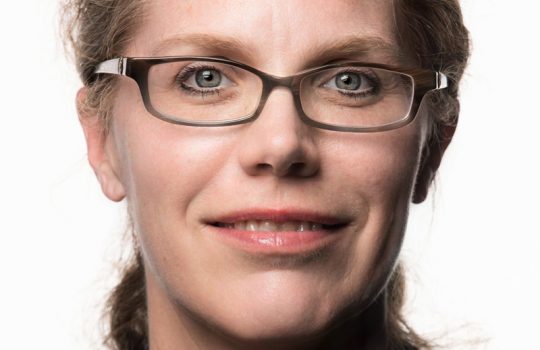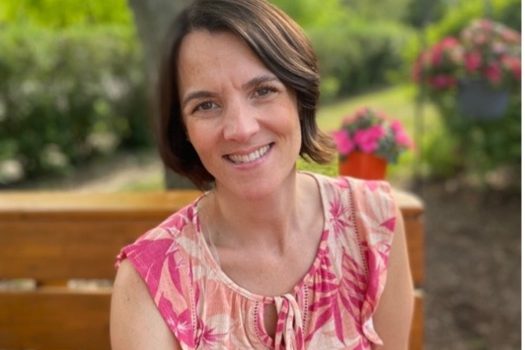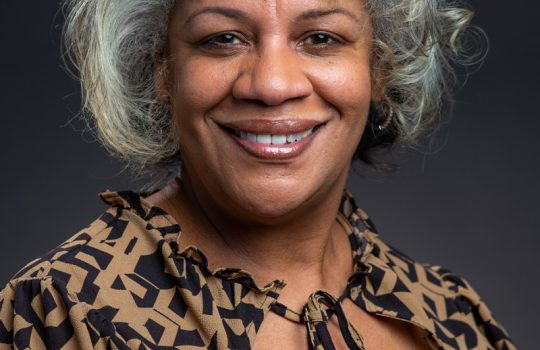What do you do at Fermilab?

Samantha Panock is working to advance environmental protection and sustainability at Fermilab. Photo: Dan Svoboda, Fermilab
I’m an environmental specialist within ES&H here at Fermilab. So, my duty is to help each project and each department understand and ensure alignment with environmental regulations.
At the lab, you’re hearing the term sustainability a lot more, same thing with environmental protection. Environment, Safety and Health, and Infrastructure Services Division have been working together to promote environmental protection and sustainability at the lab. Sustainability, in this case, refers to how we evaluate actions we take at Fermilab, with the goal to have an overall smaller environmental footprint.
It’s hard to pin what I do down to just one thing. My day consists of reviewing all of Fermilab’s proposed projects, and activities — any project that requires an environmental perspective. I help them comply with environmental regulations. The team and I work together to protect Fermilab’s land as well as the environment in general.
Also, I’m the lead for three major programs within the Environmental Protection Group. I’m the clean air compliance manager, the National Environmental Policy Act program manager and the lab’s cultural resources subject matter expert.
What I do stems from my love and appreciation for nature. I’ve made it my career to protect the environment to the best of my ability. I help find a balance between preserving nature while also promoting the advancement of human society. It’s difficult, but important work.
How long have you worked at Fermilab?
I just finished my sixth month at Fermilab — it’s been a whirlwind of information, meeting people, and understanding how the Department of Energy operates. Everyday I’m learning more about how Fermilab works. I’m a huge believer in collaboration. I’ve been out and about meeting scientists and technicians. I want to help foster more discussion between my group and all the other groups at the lab.
Prior to Fermilab, I worked for the Environmental Protection Agency, and I worked for a research facility studying plant ecology and evolution.
What is the most challenging part of your work?
As the NEPA Program Manager, part of my job is to promote collaboration and facilitate conversation between projects and departments across the lab. I like to acknowledge that each project or department has its own set of priorities, so it’s an interesting, but not impossible, challenge to get everyone aligned. I think alignment is the key to safe, efficient and successful operations.
One of the goals of the environmental department is to increase awareness of our existence and what we can do for other departments across the lab. We want to support all projects and activities. Everyone in the environmental department is knowledgeable and hardworking. We’re a team of scientists with a strong understanding of the environment and environmental policy.
What is the most rewarding part of the work you do at Fermilab?
For me, the collaboration and networking across all the departments at the lab is one of the most rewarding parts of my job. I get to meet with people across different disciplines and from different walks of life — I learn something new every day!
Fermilab is a leading research facility in particle physics; it’s next level in terms of science and research. When you think about the amazing work that happens here, it’s inspiring. I get to play a small part in accomplishing Fermilab’s mission; it’s motivating for me.
What do you do for fun outside of work?
I’m a big advocate for physical and mental well-being. So, I spend a lot of time outside in nature. I hike and practice yoga and meditation. On top of that, I study martial arts. My hobbies are geared towards supporting my health so I can take care of myself and perform better at work.
I’ve been studying Brazilian Jiu-Jitsu for about four years.
At this point, jiu-jitsu is 90% of my personality. Martial arts were pretty intimidating at first. When I started, I was way out of my comfort zone. It’s a male-dominated sport, so I had to get comfortable training with men. The confidence I’ve gained in martial arts has translated into the confidence I need to succeed as a woman in the STEM world. I’m proud of my progress. It takes 10 years to earn your blackbelt in jiu jitsu. At this point in my journey, I have a firm understanding of the basics.
Some of my training partners have become my best friends. You meet people from all walks of life in the world of martial arts. If anyone is interested in studying martial arts, I’d be happy to talk to them about how to start!
Fermi National Accelerator Laboratory is supported by the Office of Science of the U.S. Department of Energy. The Office of Science is the single largest supporter of basic research in the physical sciences in the United States and is working to address some of the most pressing challenges of our time. For more information, please visit science.energy.gov.



